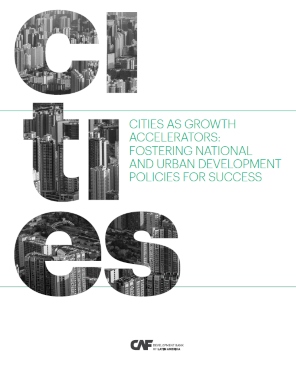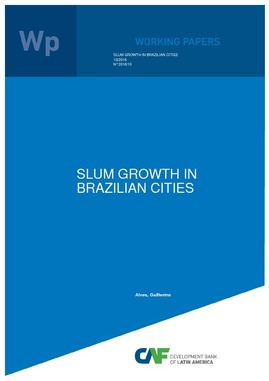Mostrar el registro sencillo del ítem
The Political Economy of Slum Growth: Evidence from Brazil
| dc.contributor.author | Alves, Guillermo | |
| dc.coverage.spatial | América Latina y el Caribe | es_ES |
| dc.coverage.spatial | Brasil | es_ES |
| dc.date.accessioned | 2023-03-03T21:17:41Z | |
| dc.date.available | 2023-03-03T21:17:41Z | |
| dc.date.issued | 2023 | |
| dc.identifier.citation | Alves, G. (2023). The Political Economy of Slum Growth: Evidence from Brazil. Retrieved from https://scioteca.caf.com/handle/123456789/2006 | en_GB |
| dc.identifier.uri | https://scioteca.caf.com/handle/123456789/2006 | |
| dc.description.tableofcontents | One-fourth of the world’s urban population lives in slums and the number of slum residents grew from 650 million in 1990 to 1 billion in 2018. Existing explanations for slum growth focus on rural-urban migration and poverty. While these factors are relevant for rapidly urbanizing low-income countries, slum growth is frequent in highly urbanized, middle-income countries in Latin America. This paper provides evidence from Brazil that local government actions can increase slum growth without changes in poverty or immigration. Using a regression discontinuity design in close elections, I find that victories by a center-left, pro-poor party in the 2000 municipal election strongly increased the share of households living in slums in 2010 compared to 2000. I explore the mechanisms behind this result with a novel panel of census tracts and data on municipalities’ policies, expenditures, and sociodemographics. A more permissive attitude towards the formation of new slums is the main candidate to explain the observed effect. | es_ES |
| dc.language.iso | en | es_ES |
| dc.subject | Economía | es_ES |
| dc.subject | Investigación socioeconómica | es_ES |
| dc.subject | Pobreza | es_ES |
| dc.subject | Vivienda | es_ES |
| dc.title | The Political Economy of Slum Growth: Evidence from Brazil | es_ES |
| dc.type | workingPaper | es_ES |
Ficheros en el ítem
Este ítem aparece en la(s) siguiente(s) colección(ones)
-
6.1 Documentos de trabajo en investigación socioeconómica
En esta colección se encuentran los documentos de trabajo sobre temas económicos y sociales prioritarios para la región.




